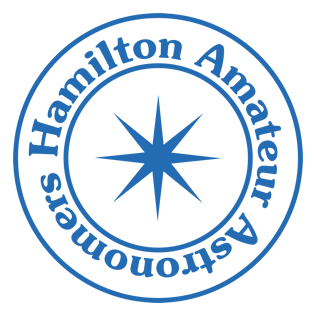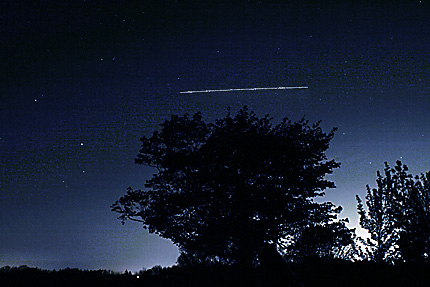(Steve reporting on his 4 night astro-camp-out at Cherry Springs.)
I arrived one day late, as events in town delayed my departure until it was impractical on Wednesday night. That was my first mistake, as by all accounts Wednesday was every bit as good as Thursday.
I arrived on Thursday in time to see the sunset, and get all set up and collimated.
By then, the internet was working. Gone are the days of the $15 phone call to let folks at home know I made it safely. Hooray.
With Wifi, it truly is the ‘Ideal Astro Park’. There’s nothing like it within a thousand miles…
Star hopping at CS is, as Ann says, a cinch because there are so many stars visible, even without a finderscope.
By some stroke of bad luck, the CSC got reprogrammed to try for June 24 instead of May 24. We looked up a nearby clock for some consolation.
I made several excellent improvements to the GWS while there. I repositioned the finderscope onto the main barrel, so that the scope now does not need a counterweight, and it sits, without applying the brake, at any orientation, and does not even swing when tilted by the equatorial platform.
Josh has a LB 16 too, but he has worked wonders on it. Starting with new coatings for the mirrors, and continuing with special covers to protect it from dust, and finally, all of the metal has been powder-coated black or sparkle-red. It’s a beauty.
I had only one step up on him, the EQP, which allowed me to hold a magnified view without adjusting the scope.
Josh also lent me his laser collimator, and it showed that my laser is off kilter, explaining some issues focusing. Fortunately, I was able, after collimating with Josh’s, to get my laser to point in the right direction. Now I just have to keep it together.
Finally, he suspected correctly that some of the screws on the GWS have worked loose. He was right! Some were barely finger tight, causing the scope to shift when tilted to the zenith.
It was worth the drive just as a telescope clinic. Thank-you Josh!
I plotted the position of Pluto, and star hopped to it. Pluto was not found. (That was before re-alignment mentioned above)
It’s at 14th Magnitude, but the stars on the chart are only 12th Magnitude… I found 6 stars not on the chart, but none were pluto (this time).
I was hopeful to see all 9 planets in one night. Maybe next time. (For me, Pluto will always be a planet. I remember the mean distance from the sun, which I memorized when I was 7 years old… 3670000000 miles.)
The eastern horizon as viewed from CSSP has a lot of trees… I walked to the end of the airfield to see if the view opens up at all. Not much, really.
I continued my sequential Messier Marathon, picking up M69, M70, M71, M72, and M73.
I then tried the reverse SMM, starting with M109 and working backwards, to M101.
I developed effective geometric star-hops for them. (I have seen M110 dozens of times, so
i called the latest of those the de-facto first step in a reverse Sequential Messier Marathon)
M100 was a problem… there’s very little in terms of stars in the field near it, that are bright enough to be on star maps. Here’s where the Deep Sky Image Catalog comes in handy, showing the star fields and shapes of the Messier Objects and many others.
Subsequent nights were too soupy for easy galaxy-hopping.
Several people wondered how I fit the scope into the VW. A few were there to see the final result when I packed it back up again.
Sunday evening started out very hazy, and it was difficult for me to make out
more than 2 stars in Lyra. Eventually it cleared… in the meantime I tried out the newly-aligned optics on some favourites, including M13. It turned out the soupy skies made appreciation problematic.
We had some visitors who were camping across the road… university students who are studying ‘Observational Astronomy’. They learned some from us.
As the skies cleared the transparency remained bad, but improved.
I also tried going up again, from M3 onwards (M1 and M2 are too close to the sun these days). I got up to M20 in rapid succession. Nothing like the first time I tried them.
I have to admit I have learned a lot about star hopping in the meantime.
Later clouds started going by, and eventually the dawn caught up with me.
In the morning, everyone was packing up, and the CSC for a nearby community showed
wall to wall clouds expected on Monday night. I should have just put my feet up and waited for the computation due at noon, but decided to pack up and head for home.
Next time, the plan is, go 2 days sooner (ie, Tuesday night) and stay regardless of the CSC. Also, bring something to do if it rains, such as, some astrophotos to edit, or perhaps a guitar.


